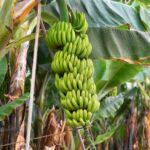When growing oranges in South Africa, there are several infections and diseases that you should watch out for. Here are some common ones:
- Citrus greening (Huanglongbing or HLB): This is one of the most devastating diseases affecting citrus trees worldwide, including oranges. It is caused by a bacterium called Candidatus Liberibacter spp. and is transmitted by the Asian citrus psyllid insect. Infected trees show symptoms such as yellow shoots, misshapen fruit, and a bitter taste. There is no cure for HLB, so prevention and control measures are crucial, including the use of insecticides to manage the psyllid population.
- Citrus black spot: This fungal disease is caused by the pathogen Guignardia citricarpa. It affects the fruit’s appearance, causing dark, sunken lesions with a characteristic black spot. Citrus black spot can reduce fruit quality and marketability. Fungicides and proper orchard sanitation can help manage the disease.
- Citrus canker: This bacterial disease is caused by Xanthomonas citri subsp. citri. It causes raised corky lesions on leaves, stems, and fruit. Citrus canker spreads through wind-driven rain and human activities. Infected fruit may drop prematurely, leading to yield loss. The disease can be managed through the use of copper-based sprays and cultural practices like pruning infected material.
- Phytophthora root rot: Phytophthora spp. are water molds that cause root rot in citrus trees. Excessive soil moisture and poor drainage can create favorable conditions for their growth. Symptoms include wilting, yellowing leaves, and stunted growth. Proper irrigation and drainage management, as well as the use of fungicides, can help control Phytophthora root rot.
- Alternaria brown spot: This fungal disease is caused by Alternaria alternata. It affects the fruit, causing small, circular lesions that turn brown or black. Severe infections can lead to fruit drop. Fungicide applications and proper orchard sanitation are essential for managing Alternaria brown spot.
- Citrus tristeza virus: This viral disease is transmitted by aphids and can cause severe damage to citrus trees, including oranges. Symptoms include stunted growth, yellowing of leaves, and decline in fruit quality and yield. There is no cure for Citrus tristeza virus, so prevention measures such as using virus-free nursery stock and controlling aphid populations are important.
It’s crucial to monitor your orchard regularly, implement good cultural practices, maintain proper hygiene, and seek advice from agricultural experts or local agricultural extension services to effectively manage and mitigate the risks of these infections and diseases in your orange grove.









